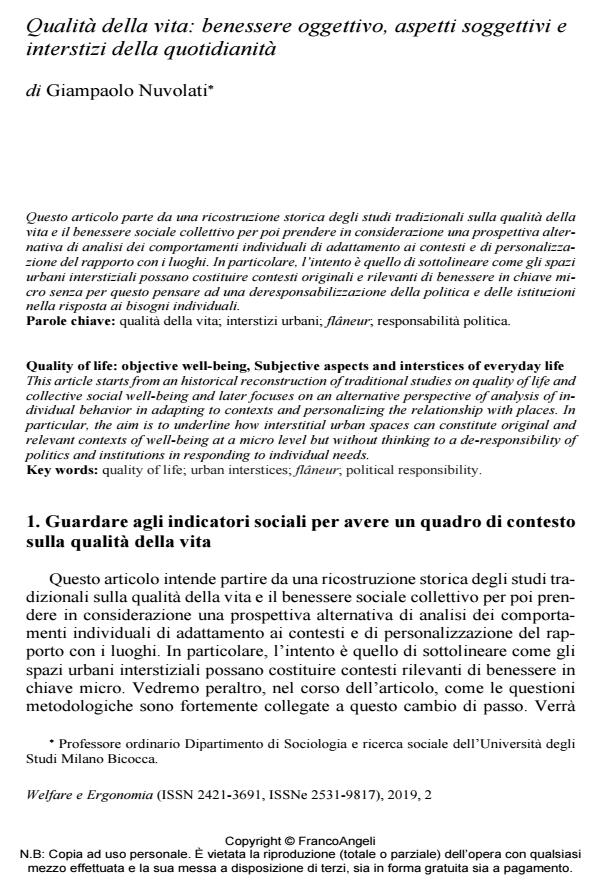Quality of life: objective well-being, Subjective aspects and interstices of everyday life
Journal title WELFARE E ERGONOMIA
Author/s Giampaolo Nuvolati
Publishing Year 2020 Issue 2019/2
Language Italian Pages 10 P. 21-30 File size 165 KB
DOI 10.3280/WE2019-002002
DOI is like a bar code for intellectual property: to have more infomation
click here
Below, you can see the article first page
If you want to buy this article in PDF format, you can do it, following the instructions to buy download credits

FrancoAngeli is member of Publishers International Linking Association, Inc (PILA), a not-for-profit association which run the CrossRef service enabling links to and from online scholarly content.
This article starts from an historical reconstruction of traditional studies on quality of life and collective social well-being and later focuses on an alternative perspective of analysis of indi-vidual behavior in adapting to contexts and personalizing the relationship with places. In par-ticular, the aim is to underline how interstitial urban spaces can constitute original and rele-vant contexts of well-being at a micro level but without thinking to a de-responsibility of poli-tics and institutions in responding to individual needs.
Keywords: Quality of life; urban interstices; flâneur; political responsibility.
- Capabilities, Learning, and Urban Quality of Life Arianna Luisa Cavaliere, pp.1 (ISBN:978-3-658-49430-8)
- Capabilities, Learning, and Urban Quality of Life Arianna Luisa Cavaliere, pp.259 (ISBN:978-3-658-49430-8)
- Capabilities, Learning, and Urban Quality of Life Arianna Luisa Cavaliere, pp.9 (ISBN:978-3-658-49430-8)
Giampaolo Nuvolati, Qualità della vita: benessere oggettivo, aspetti soggettivi e interstizi della quotidianità in "WELFARE E ERGONOMIA" 2/2019, pp 21-30, DOI: 10.3280/WE2019-002002